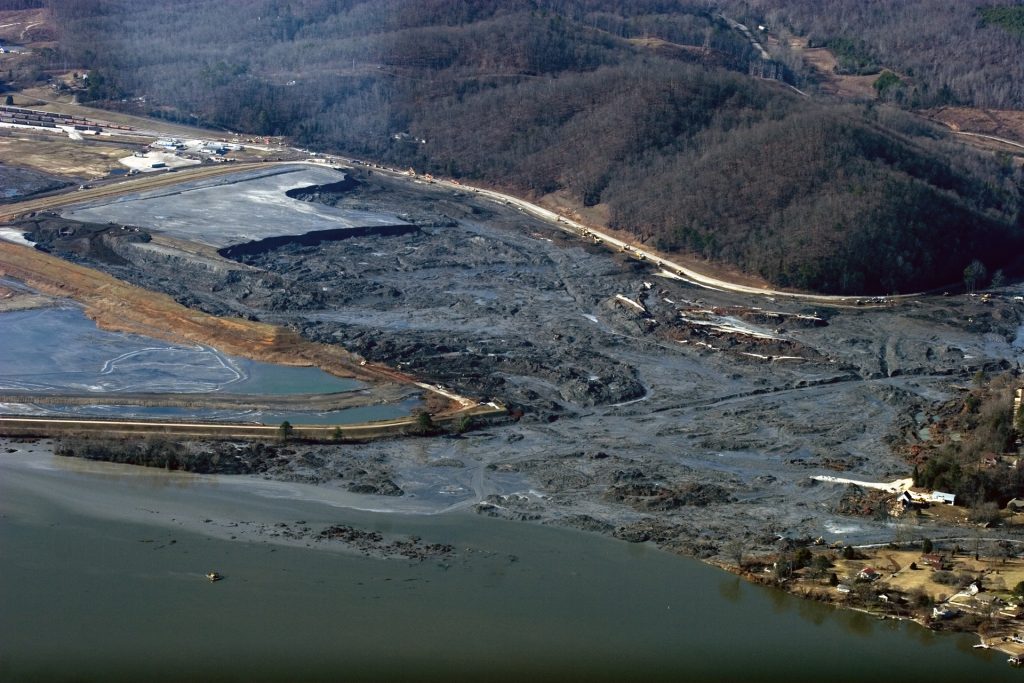Coal Ash Maps
Alabama Power Coal Ash Maps Illustrate Potential Danger to River and Public
FOR IMMEDIATE RELEASE: August 25, 2017
CONTACT: Nelson Brooke, Riverkeeper: (205) 458-0095, [email protected]
(Birmingham, AL) – Alabama Power recently released coal ash inundation maps for five of its power plants in Alabama, including all three power plants located in the Black Warrior River basin. Coal ash is the waste that remains after coal is burned. It contains toxic heavy metals including mercury, arsenic, selenium, and chromium, which are harmful to human health, water resources, and wildlife.
Coal ash is disposed of in unlined impoundments constructed of earthen dams near the river. The impoundments discharge millions of gallons of polluted water into the river system every day, and carry the risk of groundwater contamination and catastrophic structural failure.
The inundation maps show areas that could be impacted by coal ash waste from coal ash impoundments in the event of a dam breach. These maps are part of Alabama Power’s Emergency Action Plans prepared for Gorgas Steam Plant, Greene County Steam Plant, and Miller Steam Plant in case of a natural or manmade disaster. The Emergency Action Plans were federally required by the Coal Combustion Residuals (CCR) Rule.
Gorgas Steam Plant has a 420 acre lake (Rattlesnake Lake), originally constructed in 1953, with a total storage capacity of 467 million cubic feet of coal ash on the Mulberry Fork in Walker County. Greene County Steam Plant has a 474 acre impoundment with a total storage capacity of 232 million cubic feet of coal ash on the Black Warrior River in Greene County. Miller Steam Plant has a 341 acre impoundment with a total storage capacity of over 591 million cubic feet of coal ash on the Locust Fork in Jefferson County.
All three impoundments are federally classified as having Significant Hazard Potential, where failure could cause significant economic loss and environmental damage. Alabama is the only state in the nation without a dam safety law and regulatory authority.
According to a 2012 report, Alabama’s coal-fired power plants dispose of almost 15 million pounds of toxic metals in on-site ash ponds, more than plants in any other state. That report also identified Alabama Power’s Miller Steam Plant in western Jefferson County as sending more toxic metals to its ash pond than any other plant in the country, more than 5 million pounds annually.
“A breach or failure at of one of these power plants’ coal ash impoundments would wreak havoc on the river system, threatening everyone’s right to clean water and healthy habitat for fishing, swimming, drinking water, paddling, hunting, boating, and wildlife,” said Nelson Brooke, Black Warrior Riverkeeper.
In November 2016, to comply with federal regulations, Alabama Power announced its preliminary coal ash closure plans to “cap in place” the ash at these three power plants, leaving it to sit in an unlined pit and likely pollute groundwater and the river nearby for centuries to come. This decision came after many other utilities in the southeast instead chose a closure option strongly encouraged by clean water advocacy organizations: excavate the coal ash and move it to a lined landfill away from rivers and lakes.
“We expect Alabama Power to do the right thing and clean up its pollution before a catastrophic event occurs,” said Nelson Brooke, Black Warrior Riverkeeper. “Alabama Power should remove their coal ash from these unlined impoundments by the river and place it in lined landfills with adequate leachate handling.”
To view Alabama Power’s maps and associated documents, see below:
Gorgas Steam Plant: Inundation Map | Emergency Action Plan | CCR Compliance Data
Greene Co. Steam Plant: Inundation map | Emergency Action Plan | CCR Compliance Data
Miller Steam Plant: Inundation map | Emergency Action Plan | CCR Compliance Data
To view a Google map created by Riverkeeper showing the power plant’s locations, click here.
For John Wathen’s photo of TVA’s 2008 coal ash spill, click here. (Flight by SouthWings.org).
To learn more about coal ash in Alabama and the southeast, visit: southeastcoalash.org
###
Black Warrior Riverkeeper’s mission is to protect and restore the Black Warrior River and its tributaries. The citizen-based nonprofit organization promotes clean water for the sake of public health, recreation, and wildlife habitat throughout the Black Warrior River watershed.

Coal ash spill in Kingston, TN. Photo by John Wathen. Flight by SouthWings.












